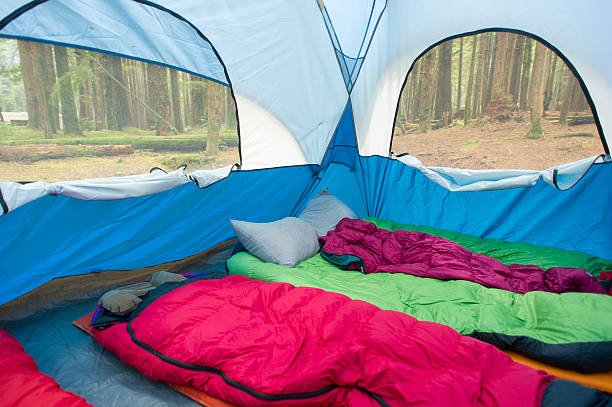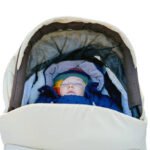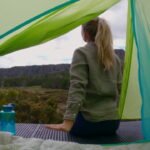Are you a camping enthusiast or an avid hiker who loves to explore the great outdoors during the summer months? If so, you know the importance of having the right sleeping bag to keep you comfortable and well-rested throughout your adventures.
Summer sleeping bags are specifically designed to provide optimal comfort and breathability in warm weather conditions, ensuring that you can enjoy a restful night’s sleep without overheating.
Why Choose a Summer Sleeping Bag?
Summer sleeping bags are a crucial piece of gear for any outdoor enthusiast who plans to camp or hike during the warmer months. Unlike their winter counterparts, which are designed to trap and retain body heat, summer sleeping bags prioritize ventilation and moisture-wicking properties to keep you cool and dry.
Advantages of Summer Sleeping Bags
- Temperature Regulation: Summer sleeping bags are designed to be lightweight and well-ventilated, allowing excess heat and moisture to escape, keeping you comfortable even in warm weather conditions.
- Breathability: High-quality summer sleeping bags feature breathable fabrics and advanced insulation technologies that promote airflow and prevent moisture buildup, ensuring a comfortable sleeping environment.
- Lightweight and Compact: Summer sleeping bags are typically lighter and more compact than winter bags, making them easier to carry on backpacking trips or when space is limited.
- Versatility: Many summer sleeping bags can be unzipped and used as a comforter or blanket, providing versatility in various camping scenarios.

Choosing the Right Summer Sleeping Bag
With so many options available on the market, selecting the perfect summer sleeping bag can be overwhelming. To make an informed decision, consider the following factors:
Temperature Rating
Summer sleeping bags are designed to perform optimally within a specific temperature range, typically ranging from 30°F to 60°F (-1°C to 15°C). Ensure that the temperature rating of the bag you choose aligns with the anticipated conditions of your camping or hiking destination.
Insulation Type
Summer sleeping bags often feature synthetic or down insulation, each with its advantages and disadvantages. Synthetic insulation tends to be more affordable and retains its insulating properties when wet, while down insulation is lighter, more compressible, and generally more durable.
Shell and Lining Materials
Look for breathable and moisture-wicking fabrics, such as nylon or polyester, for the shell and lining of your summer sleeping bag. These materials will help regulate your body temperature and prevent clamminess or discomfort during warm nights.
Shape and Size
Summer sleeping bags come in various shapes and sizes to accommodate different body types and sleeping preferences. Mummy-shaped bags are typically more efficient at retaining warmth, while rectangular or semi-rectangular bags offer more room to move around.
Weight and Packed Size
If you plan to carry your sleeping bag on backpacking trips or have limited space in your camping gear, consider the weight and packed size of the bag. Lightweight and compact options can make a significant difference in your overall load and comfort on the trail.

Top Summer Sleeping Bag Brands and Models
To help you navigate the vast selection of summer sleeping bags, here are some of the top brands and models to consider:
- NEMO Disco Insulated Sleeping Bag: This bag features a unique spoon shape that provides excellent freedom of movement, along with synthetic insulation and a moisture-wicking lining for optimal breathability.
- REI Co-op Magma Trail Quilt: A versatile and lightweight option, this quilt-style sleeping bag offers customizable temperature regulation and can be used as a blanket or a traditional sleeping bag.
- Marmot Phase 30 Sleeping Bag: With a temperature rating of 30°F (-1°C), this synthetic-filled bag is a great choice for warm summer nights, featuring a semi-rectangular shape and a two-way zipper for ventilation.
- Western Mountaineering SummerLite Sleeping Bag: A premium choice, this down-filled bag is incredibly lightweight and compressible, making it an excellent option for backpacking and minimalist camping trips.
- Big Agnes Anvil Horn Sleeping Bag: Designed for warm weather, this synthetic-filled bag boasts a unique pad sleeve system that secures your sleeping pad, preventing unwanted movement and ensuring a comfortable night’s sleep.
Tips for Using and Caring for Your Summer Sleeping Bag
To ensure the longevity and optimal performance of your summer sleeping bag, follow these tips:
- Proper Storage: After each use, ensure that your sleeping bag is completely dry before storing it in a breathable storage sack or a cool, dry place.
- Regular Cleaning: Follow the manufacturer’s instructions for cleaning your sleeping bag, which may involve hand-washing, machine-washing, or spot-cleaning.
- Avoiding Compression: Prolonged compression can damage the insulation and reduce the bag’s loft and warmth over time. Always store your sleeping bag in a loose, uncompressed state.
- Selecting the Right Sleeping Pad: Using an insulated sleeping pad in conjunction with your summer sleeping bag can provide additional insulation and comfort, especially on colder nights.
- Ventilation and Moisture Management: On warm nights, consider unzipping or venting your sleeping bag to promote airflow and prevent moisture buildup from condensation.

FAQs (Summer Sleeping Bags)
What is the difference between a summer sleeping bag and a winter sleeping bag?
Summer sleeping bags are designed to provide optimal breathability and ventilation for warm weather conditions, while winter sleeping bags prioritize insulation and heat retention for colder temperatures.
Can I use a summer sleeping bag in cooler weather?
While summer sleeping bags are not designed for extreme cold, they can be suitable for milder temperatures, especially when paired with additional layers or a warmer sleeping pad. However, for consistently cool or cold conditions, a dedicated winter sleeping bag would be more appropriate.
How do I determine the appropriate temperature rating for my summer sleeping bag?
Consider the average nighttime temperatures in the areas you plan to camp or hike during the summer months. A safe rule of thumb is to choose a sleeping bag with a temperature rating around 10-15°F (5-8°C) lower than the expected low temperatures.
What is the difference between synthetic and down insulation in summer sleeping bags?
Synthetic insulation is more affordable and retains its insulating properties when wet, while down insulation is lighter, more compressible, and generally more durable. The choice depends on your personal preferences and intended use.
How do I properly care for and clean my summer sleeping bag?
Follow the manufacturer’s instructions, which may involve hand-washing, machine-washing, or spot-cleaning. Ensure that the bag is completely dry before storing it in a breathable storage sack or a cool, dry place.
Can I use a sleeping bag liner with my summer sleeping bag?
Yes, using a sleeping bag liner can help extend the life of your summer sleeping bag by protecting the interior from body oils, dirt, and moisture. Liners also add an extra layer of warmth on cooler nights.
How do I prevent moisture buildup inside my summer sleeping bag?
Proper ventilation is key. Consider unzipping or venting your sleeping bag on warm nights to promote airflow and prevent moisture buildup from condensation.
Can I use my summer sleeping bag as a blanket or comforter?
Many summer sleeping bags are designed to be versatile and can be unzipped and used as a comforter or blanket, providing additional flexibility and comfort in various camping scenarios.
My Closing Thoughts
Investing in a high-quality summer sleeping bag is essential for any outdoor enthusiast who wants to enjoy comfortable and restful nights during warm-weather adventures. By considering factors such as temperature rating, insulation type, shell and lining materials, shape and size, and weight and packed size, you can find the perfect summer sleeping bag that meets your specific needs and preferences.


